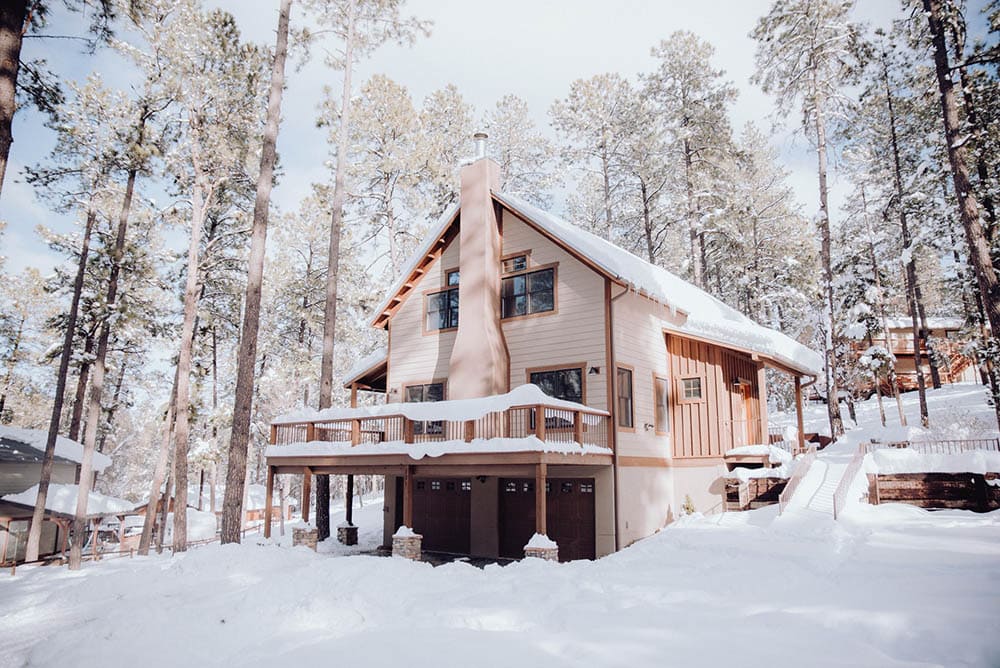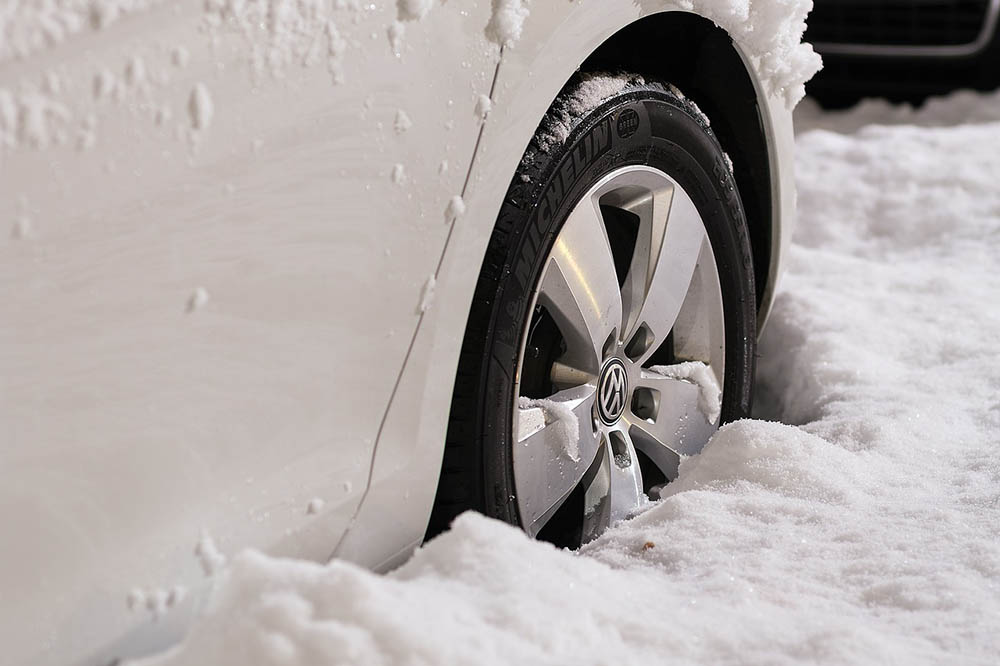What’s the Ideal Indoor Humidity Level for Winter? 10 Steps To Achieve It
-
Chris Dinesen Rogers
- Last updated:

Humidity is the proverbial double-edged sword. High levels leave us feeling uncomfortable and sticky when temperatures are soaring during the summer. On the other hand, winter humidity is a shocking experience! It’s hard to touch anything without static electricity jolts. It’s understandable why our dogs and cats run from us after experiencing a shock or two after we pet them.
Determining the ideal indoor humidity level depends on a few factors, such as the temperature, location, and specifications of your home. Understanding basic terminology will also help you learn how to make it more comfortable, even if it’s cold outside.
Normal Humidity Levels
Air contains about 2.5% water, typically in vapor form. That may not sound like a lot, but it makes a significant difference in your comfort. Absolute humidity measures how much is in the air. However, you’re more likely to hear the term relative humidity (RH), which is the amount with respect to the temperature. Since we’re talking about extreme weather conditions, it will significantly affect your comfort.
The RH percentage can range from 0 to 100, although the former is unlikely in normal household conditions. The latter doesn’t mean it’ll start raining in your home. Instead, the air is at its maximum holding capacity for water. RH describes the situation outdoors. Indoor humidity is what you’re feeling inside your house. For example, AccuWeather uses a sophisticated algorithm to determine this measure.
Levels that are too high in the winter can cause condensation to form on your windows, not unlike a glass of ice water. Thawing can leach inside and potentially rot the structure of the building. It can also lead to mold. Low levels are just as bad, shocks aside. It can also increase your risk of bacterial and viral infections. Your dry nasal passages can’t protect you from airborne pathogens, allowing them to enter your body.
Comfortable indoor humidity levels range from 30%–60%. However, the high end of the spectrum can cause condensation, so you must dial it back a bit to get to the sweet spot. For winter, that means 30%–45%.

What Causes Changes in Humidity?
Temperature is one of the main drivers of humidity levels. Warm air can hold more water vapor. For example, the maximum water content at 68℉ is nearly four times as much as 32℉. Meteorologists use the two measures for humidity because the RH at colder temperatures will be higher if we speak in absolute terms. Using RH instead of the latter focuses on what matters most to us: comfort.
It’s hard to cool off on a hot summer day if the RH is too high. Likewise, getting warm is challenging if the RH is high in the winter. Moisture is a better conductor. That’s why a rainy day feels colder if the temperature is low than when it’s warm.
That fact matters when we’re determining the ideal winter humidity. Your furnace isn’t evaporating the moisture. It’s not warm enough to do it. However, the humidity must be at the right percentage and strike a balance between other things affecting it so you can feel comfortable in the winter.
Other factors play a role in determining the ideal winter level. Urban areas are often drier than rural places because of less vegetation. Plants transpire water and carbon dioxide as byproducts of photosynthesis, thereby increasing the RH. There is also a higher percentage of impervious surfaces like roads and park lots reflecting heat and evaporating moisture. It’s an example of the urban heat island effect in cities.
The 10 Simple Methods to Increase Humidity Levels
Luckily, there are several things you can do to raise the humidity levels in your home. Then, you can enjoy the benefits of creating the ideal conditions, such as smoother skin and a healthier indoor environment. It can also save you money on your heating bills.

1. Ensure That Your Insulation Is Adequate
Several of our suggestions address temperature control for various reasons. First, it will save you on heating costs. Second, they’ll create more stable conditions and prevent moisture loss. Finally, they’ll reduce drafts and make you and your family more comfortable so that the other solutions can do their jobs more efficiently. Since heat rises, it’s time to go to the top and check the insulation.
2. Install Weatherstripping on Your Doors

We recommend installing weatherstripping on exterior doors. Again, we’re aiming to ensure the temperature in your home is constant and not affected by what’s happening outside.
3. Put Plastic Over Your Windows
Putting plastic sheets over your windows is an excellent way to keep the cold out if the time isn’t right to upgrade them. This simple DIY solution does surprisingly well without breaking the bank to keep your house warm.
4. Add Some Plants

We talked about moisture and photosynthesis. It’s the best excuse to buy some houseplants to liven up your home with greenery. It’ll make the winter seem less dreary while helping to maintain the ideal indoor humidity. The plastic you installed on your windows will ensure they don’t get a draft.
5. Air Dry Your Clothes
This one is one of our favorites. Air drying your clothes can add significant moisture to your home. It can also save you money on your utility bills. Get a rack or hang some clothesline to get the job done. Sure, it’ll take a while, but it’s worth it in the end.
6. Enjoy Hot Showers

Winter has never been a better time to enjoy a hot, steamy shower. It’s not unlike using a warm mist humidifier without having to run another appliance.
7. Make a DIY Potpourri
Why buy expensive air fresheners when you can use this hack to make a DIY version? Simply put a pot of water on the stove to boil. Add some fresh herbs, whole spices, and even citrus peels. Turn down the heat once it’s simmering. It’ll make the whole house smell fabulous!
8. Run a Hot Bath

Like a hot shower, there is nothing better than a warm bath to wash away the day’s worries and cares. You can give yourself a spa treatment with a fancy oil or bubbles. When you’re done, don’t drain the tub. Instead, open the door and let the fresh scent fill your home as the water cools.
9. Get a Humidifier
We left the obvious one for last. If you have an HVAC system, you can check into installing this component to take care of the indoor humidity automatically with a hands-off solution. You can also opt for a portable humidifier to put in a room that’s particularly dry. We prefer ultrasonic, cool-mist humidifiers because they run much quieter than other types.
10. Monitor Your Indoor Humidity Levels

You should also get a hygrometer to monitor your home’s humidity. Of course, the signs that it’s too low or high are evident. However, it pays to tackle the issue before it becomes obvious to keep everyone in your family comfortable.
Winter vs. Summer Humidity Levels
We discussed the effects of RH earlier in winter versus summer. Even though we’re talking about temperature extremes, you should keep your humidity between 30%–60%, with 45%–55% ideal year-round. Keeping it in this range will provide the best indoor environment no matter what conditions are like outside. You needn’t ramp it up in the winter—this range is more than sufficient.
Frequently Asked Questions (FAQs)
Does where I live make a difference?
Yes, it can have an effect on the ideal indoor humidity if your winters are mild. You can run it up to 40% without condensation.

Will a higher indoor humidity make it more expensive to heat my home?
While more moisture in the air raises the specific heat capacity, the difference between keeping your home at 25% versus 35% is minuscule. The tradeoff is being more comfortable at the higher figure.
What are the other health benefits of the ideal indoor humidity?
You’ll likely breathe easier by keeping the humidity in balance during the winter. You may also find you aren’t as sick as much. That’s thanks to your moist nasal passages. If someone snores in your family, keeping the humidity in the recommended range might solve that problem, too.
Conclusion
People often focus on room temperature when trying to make their homes cozy during the winter. However, indoor humidity is just as essential for a comfy home. The best way to manage it is to keep it the same year-round. It’ll prevent seasonal problems caused at both extremes. Aiming for 30%–45% will ensure everyone is comfortable, including your pets.
- http://ossfoundation.us/projects/environment/global-warming/atmospheric-composition
- https://www.accuweather.com/en/press/accuweather-com-introduces-accuweather-indoor-humidity-for-better-health-safety-and-comfort/744074
- https://www.engineeringtoolbox.com/maximum-moisture-content-air-d_1403.html
- https://www.osti.gov/servlets/purl/1565082
- https://www.epa.gov/green-infrastructure/reduce-urban-heat-island-effect
- https://www.energy.gov/energysaver/types-insulation
Featured Image Credit: Pixabay
Contents

